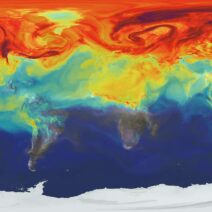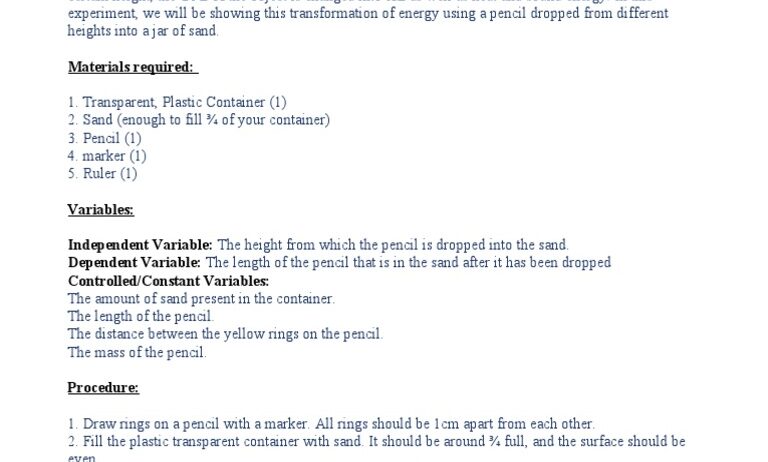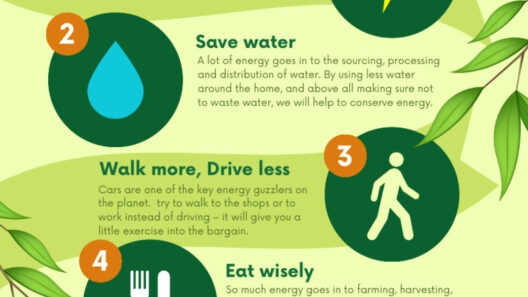The Law of Conservation of Energy is a paramount principle in the realm of science, encapsulating the essence of energy’s inviolable nature. This law posits that energy cannot be created nor destroyed; it can merely transform from one form to another. Such a concept has profound implications across various scientific disciplines, linking physics, chemistry, and even biology in a cohesive understanding of how energy pervades our universe.
Energy’s ability to shift forms—from kinetic to potential, thermal to mechanical—ensures that it remains a central theme in understanding natural phenomena. The relentless conservation of energy influences everything from the mundane workings of household appliances to the grand orchestration of celestial bodies in space.
The essence of this law serves as a pillar in the foundation of our technological society, addressing fundamental buyer concerns about energy use and sustainability. Understanding this core principle not only enlightens individuals about energy consumption but also fosters responsible practices that are crucial for environmental stewardship.
In exploring this law, we find ourselves on a journey of inquiry regarding its origins, applications, and broader implications for both nature and society.
Understanding Energy: The Building Blocks
At a fundamental level, energy is defined as the capacity to do work. It exists in numerous forms—kinetic, potential, thermal, chemical, electrical, nuclear, etc.—each playing a unique role within different systems. Kinetic energy, for instance, is the energy of motion. An object moving with speed possesses kinetic energy proportional to its mass and the square of its velocity. In contrast, potential energy refers to the stored energy an object holds based on its position or configuration, such as a boulder perched atop a hill.
The interplay of these diverse energy types illustrates the law of conservation. When an object’s potential energy decreases—as it rolls down a slope—that energy doesn’t simply vanish; it converts to kinetic energy, propelling the object forward. This conversion is not merely theoretical. The law underpins myriad natural and human-made systems, from roller coasters to hydroelectric dams.
The Universality of the Law Across Disciplines
This foundational principle is not limited to physics. In chemistry, the law manifests through reactions where chemical potential energy transforms into other forms of energy, particularly in exothermic or endothermic reactions. For instance, during combustion, chemical energy from fossil fuels converts to thermal energy, which then can drive engines or heaters, powers devices, and ultimately facilitates transport and manufacturing.
Biologically, the concept also finds expression through metabolism. Organisms convert energy stored in food into a usable form, sustaining life processes. The food chain exemplifies this, as energy flows from producers to consumers while simultaneously transforming through various chemical processes. Hence, the law of conservation of energy provides a framework for understanding how energy circulates through ecosystems, influencing biodiversity and ecological balance.
Applications and Implications in Technology
The implications of the conservation of energy extend into our everyday lives, particularly concerning energy consumption and sustainability practices. With the ongoing dialogue about climate change and renewable energy sources, a grasp of this law is vital for making informed decisions. For instance, individuals contemplating solar panels for their homes should consider energy transformation potential. Solar energy transforms into electrical energy to power various household devices, activating a sustainable cycle of energy use.
Moreover, modern technology increasingly harnesses this principle through energy efficiency measures. Innovations in machinery and building design aim to optimize energy use, minimizing waste while maximizing productivity. Retrofits for energy conservation demonstrate practical applications of this law by employing insulation and advanced heating systems to curtail energy loss and enhance comfort.
Addressing Entropy and Sustainability
The concept of conservation exists in tandem with another fundamental principle: entropy. While energy remains conserved, the tendency towards increased entropy explains why energy transformations are rarely 100% efficient. Heat loss in machinery and energy leakage during conversion processes underscore the importance of sustainable practices. By adhering to the law of conservation of energy, individuals and businesses can mitigate waste and promote a more sustainable future.
Responsible energy management dovetails with the urgency of climate initiatives. As global populations burgeon and the demand for energy escalates, understanding how to utilize and conserve energy efficiently becomes imperative. Adopting renewable energy sources not only addresses the demands of contemporary society but also considers the finite nature of fossil fuels, underscoring the law’s relevance in shaping future energy policies.
Final Thoughts: Become an Advocate for Conservation
The law of conservation of energy, a fundamental tenet of science, transcends its theoretical framework by actively shaping our lived experience. It challenges us to comprehend energy’s ubiquity, emphasizing the necessity of conserving it, transforming it sustainably, and leveraging it wisely. As individuals and communities, becoming advocates for this vital principle aligns with global efforts toward environmental accountability. By promoting energy efficiency, investing in renewable sources, and understanding our impact on natural resources, we not only honor a scientific law, but we also protect the delicate balance of our planet.







